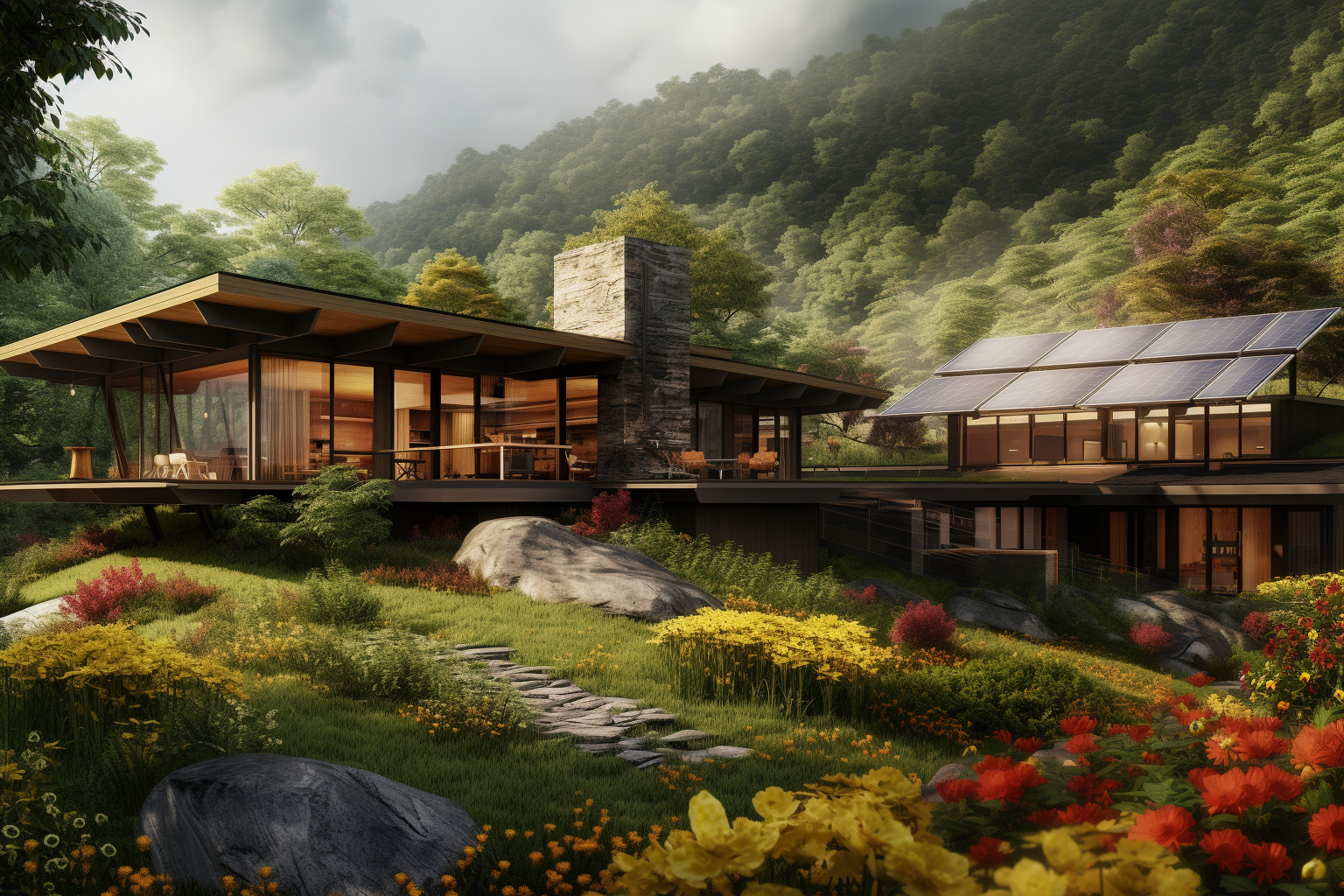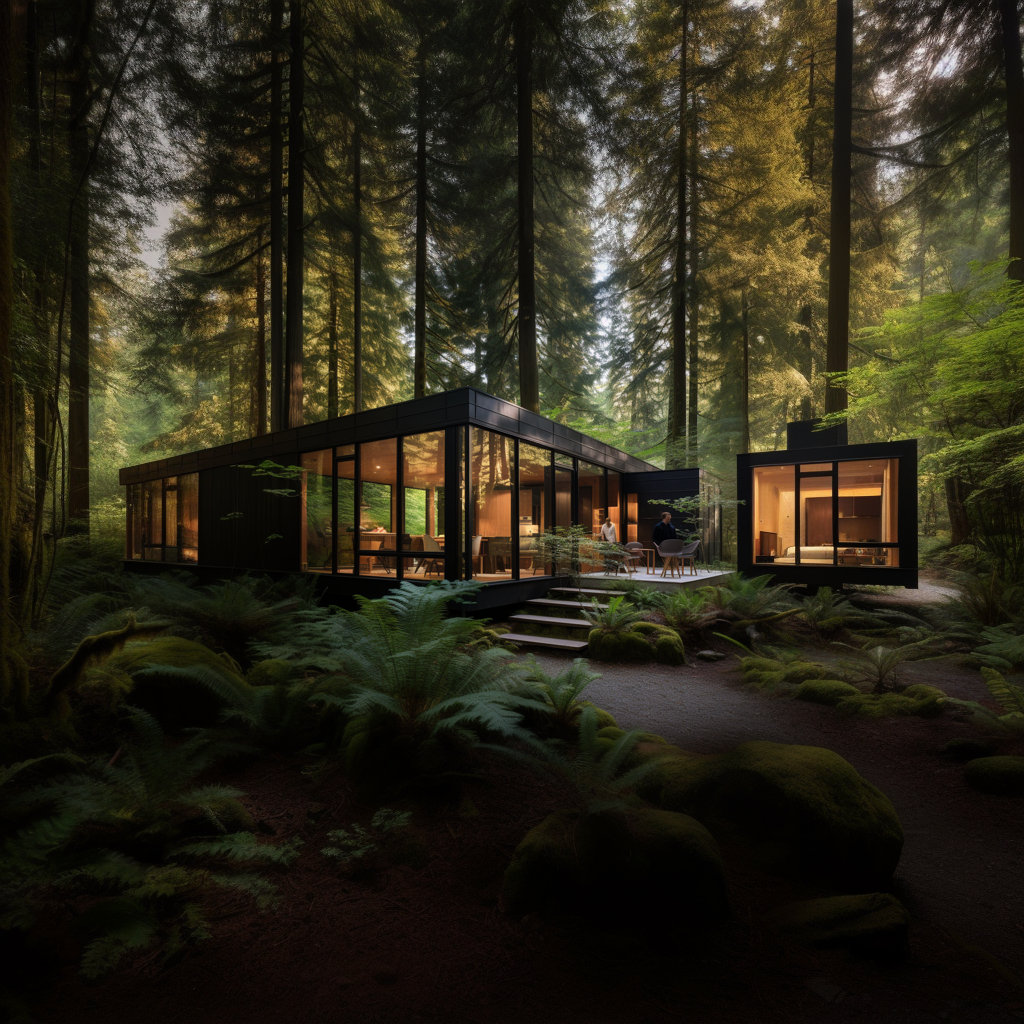What is Green Design?

Image generated by midjourney
When advertising a “green” product, there isn’t a standard that the descriptors are held to. Unfortunately sustainability marketing isn’t regulated and in the end causes confusion as to what you’re even getting or if it’s even an environmentally friendly product. The building and architecture sector isn’t much different. There are more regulations, however when buzzwords get thrown around what sustainable building is becomes unclear. I will be going over some different types of building strategies that can be implemented for someone who desires to have an environmentally conscious home.
A house that is designed holistically and uses building strategies that make the home require little energy in terms of utility costs. These houses typically heat and cool themselves using the natural environment. Focusing on orientation of the house, placement of windows, and most importantly insulation, these houses consume 90 percent less energy than conventional houses. The most important part is the insulation process. In passive houses the design, engineering, and construction is focused on making it airtight to ensure a high performance enclosure. Passive houses are uncommon.
A net zero house can be summed up by the definition of a house that creates as much energy as it consumes in a given year. This is achieved through the implementation of solar panels or small scale wind turbines to offset electrical energy costs. Like in a passive house, the design ideally will be focused not to rely entirely on mechanical strategies. Net zero houses are best achieved through new construction rather than retrofitting a current build. Net zero houses need to be consistently monitored throughout its lifetime in order to sustain net zero.
Sustainable Design:
Using the generalized concept of sustainability, the focus is more open ended and requires less design intervention than a passive house or net zero house. Sustainable designs focus on the concept of reducing energy costs and the impact of the house on the environment through various methods. This type of design is not as strict as passive or net zero. Sustainable designs may focus on sourcing local material, adding solar panels, or using high efficiency appliances. Sustainable design lends itself to making changes to existing houses rather than designing an entirely new house.

Image generated by midjourney
Extra Note regarding commercial design:
When looking at sustainability, many people bring up LEED certification. LEED is one of the most widely used rating systems for buildings in “green” design, it doesn’t mean that buildings with LEED certification are environmentally friendly. It is just a system that rates the energy efficiency of a building and how well it integrates into the environment/promotes environmentally friendly lifestyle choices. There are many different tiers of certification, however being LEED certified is not the end all be all of environmentally friendly design. Although there are LEED certified houses, it’s more standard for a large commercial building to go through the certification process.
By, Kay Kriegel intern extraordinaire @ Assembly.


